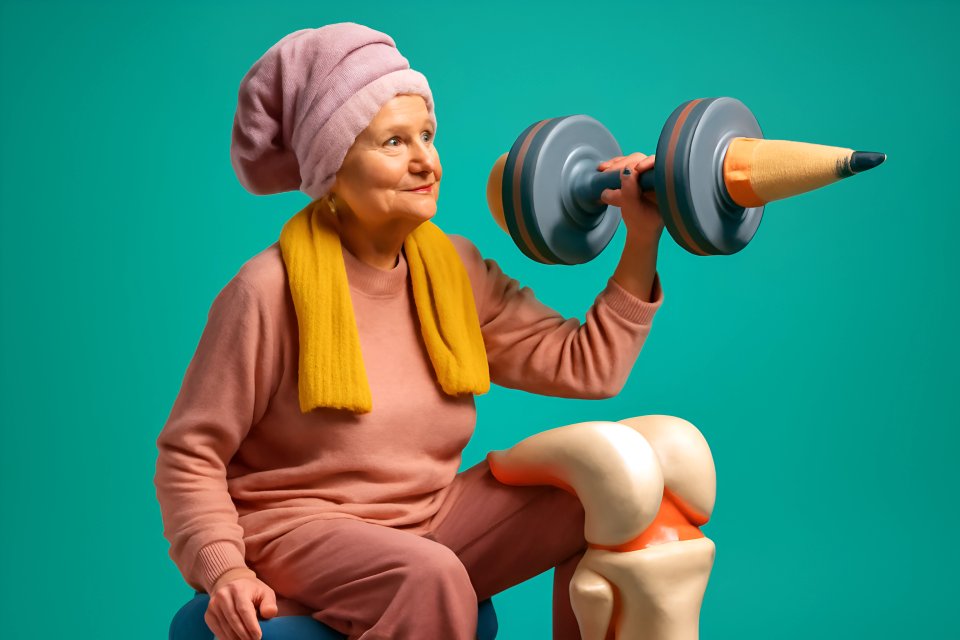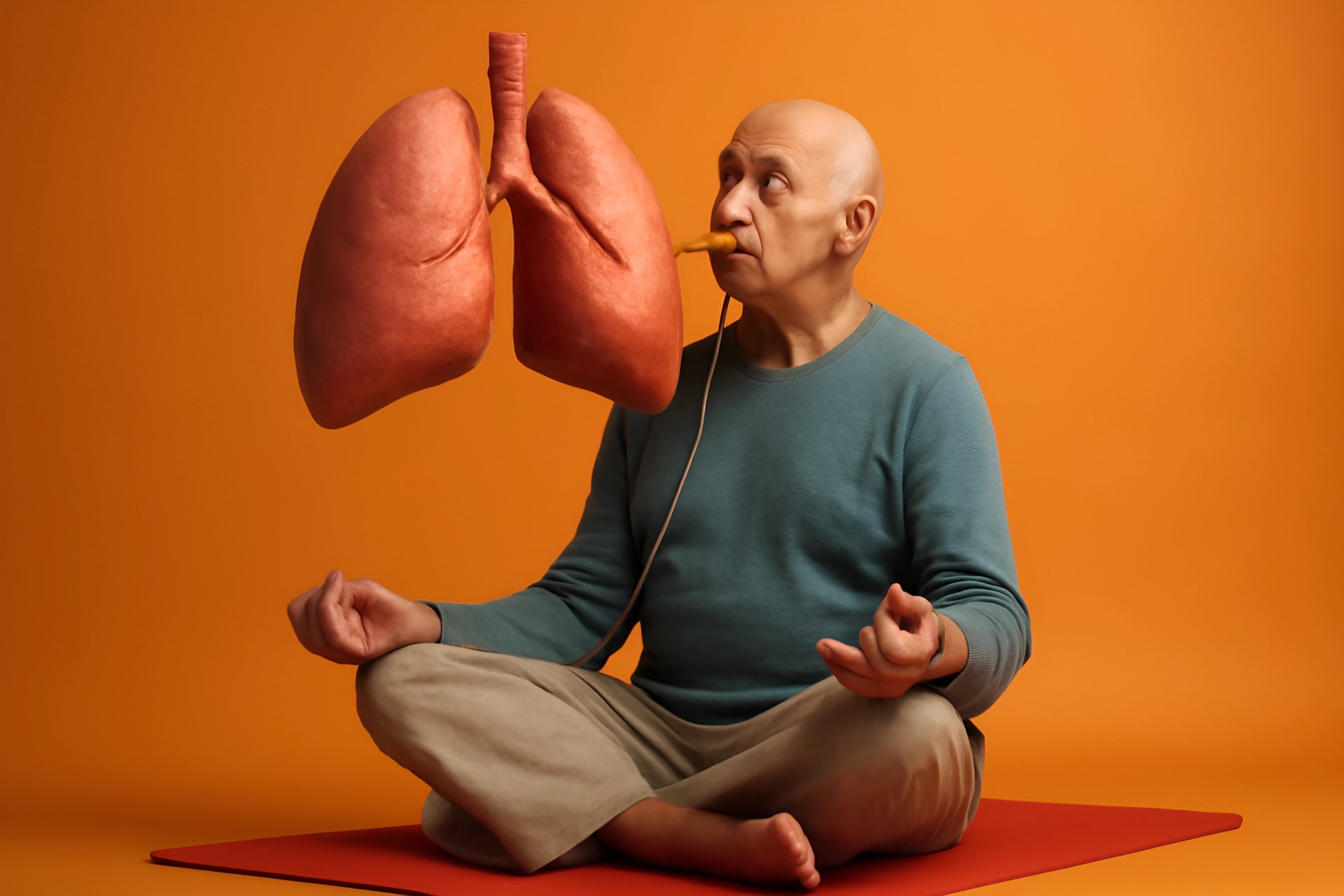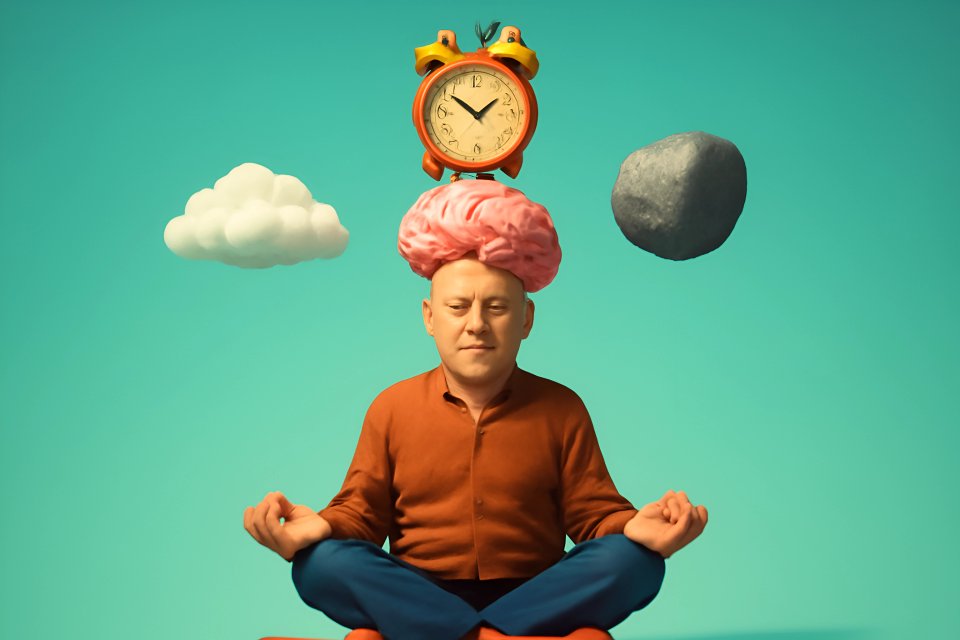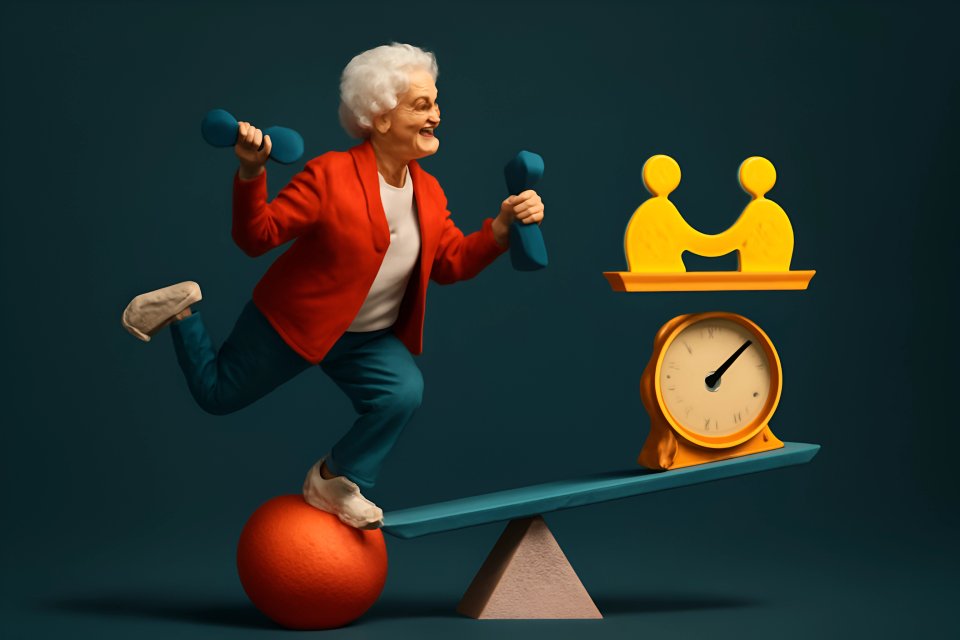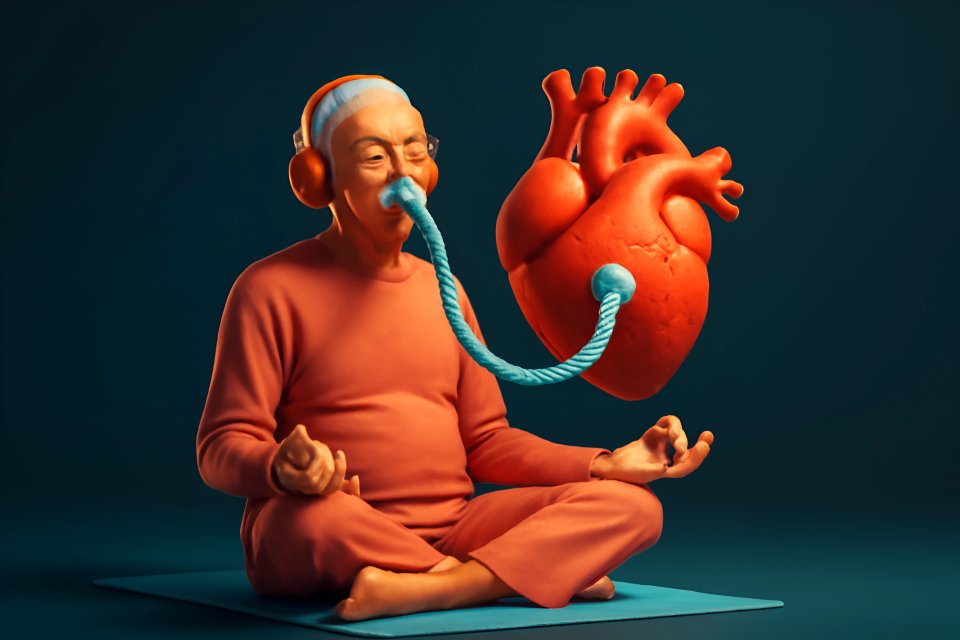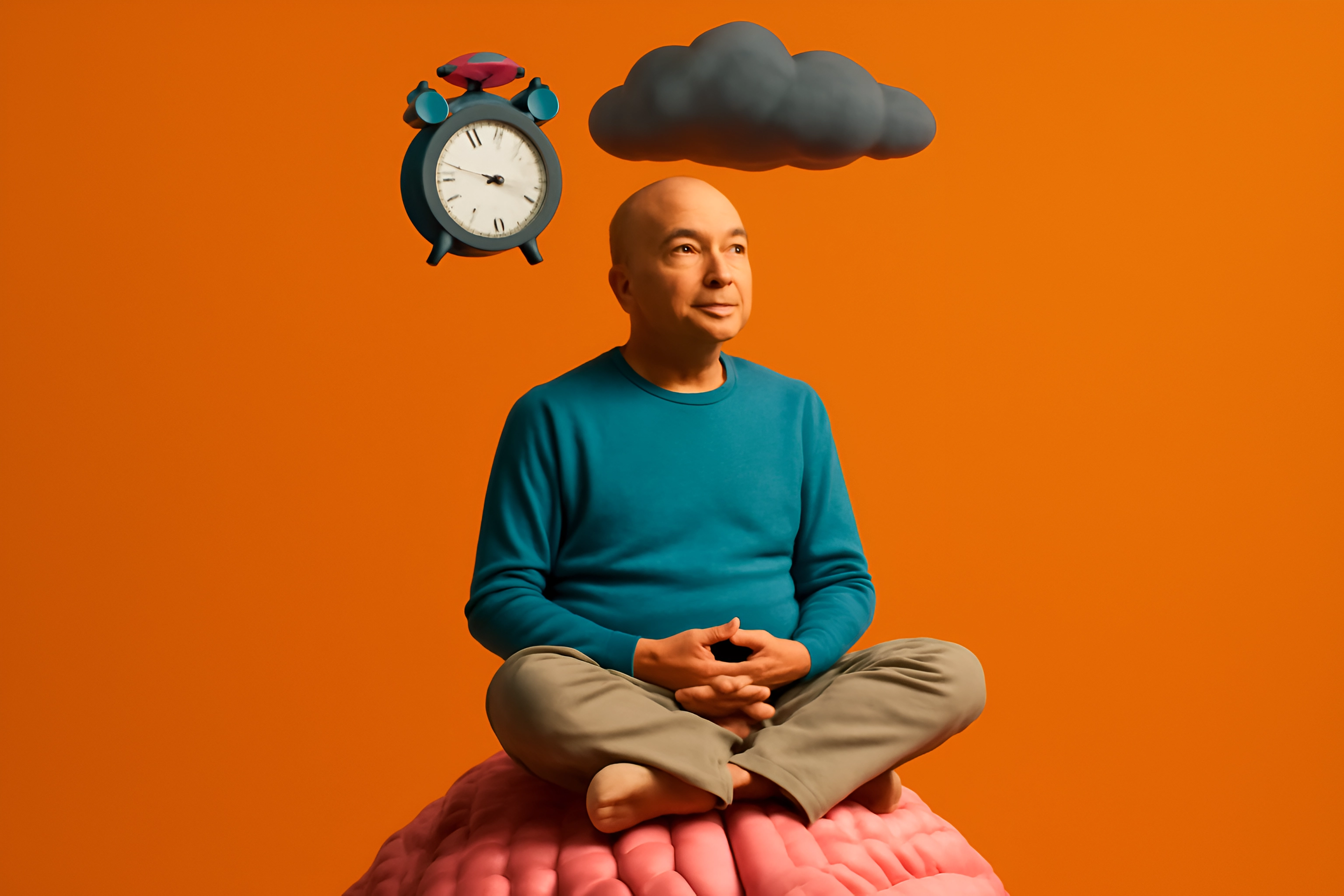
The world feels like it’s spinning faster, doesn’t it? One moment you’re planning for the future, and the next, that future is here—bringing with it a whirlwind of change. Retirement, shifting family dynamics, new health considerations… it’s a lot to navigate, and it’s perfectly normal if it leaves you feeling a little unsteady, a little anxious.
That quiet hum of worry can quickly grow into a roar, stealing your peace and making it hard to enjoy this new chapter of life. You’re told to relax, but how? When your mind is racing with "what-ifs," finding the off-switch feels impossible.
But what if you didn’t need an off-switch? What if, instead, you had a tool to simply turn down the volume—a way to acknowledge the noise without letting it take over? In this guide, we'll walk you through gentle, step-by-step mindful meditation routines to combat anxiety over 50, designed to fit your lifestyle and help you feel more grounded and in control.
Why Mindfulness is a Perfect Fit for Managing Anxiety After 50
Let’s be honest: after 50, we’re not looking for complicated wellness trends that require expensive gear or extreme effort. We crave sustainable, gentle practices that nourish both body and mind. This is where mindfulness shines as a perfect partner for this stage of life.
At its core, anxiety is often the body’s "fight or flight" response stuck in the "on" position. Mindfulness meditation acts as a powerful countermeasure, activating the parasympathetic nervous system—our "rest and digest" mode—which helps lower stress hormones and calm the storm inside. A comprehensive review of 28 trials confirmed that meditative therapies provide a moderate effect size in reducing anxiety, making it a reliable, evidence-based tool for your mental wellness toolkit.
The beauty of this practice lies in its profound simplicity and accessibility. It requires no special equipment, and you can do it anywhere, whether you’re sitting in your favorite armchair or waiting at the doctor’s office. It’s a practice that meets you where you are, helping you build mental resilience and foster the self-compassion that is so crucial during times of transition. In fact, a major clinical trial found that mindfulness is just as effective as a leading medication for anxiety, partly because it helps cultivate self-acceptance and self-compassion.
Getting Started: Your 3-Step Guide to a Comfortable Practice
The biggest barrier to starting meditation is often the belief that it has to be complicated or perfect. Let’s shatter that myth right now. Getting started is as simple as giving yourself permission to sit and breathe for a few minutes.
Step 1: Find Your Posture (Comfort is Key)
Forget the image of sitting cross-legged on the floor for an hour. Your only goal is to find a position where your body can be comfortable and your spine can be relatively straight. For most, the best option is simply sitting in a supportive chair with your feet flat on the floor and your hands resting gently in your lap. A good posture is the foundation of a good practice, and a simple home mobility routine for better posture alignment can make a world of difference.
If you are comfortable on the floor, a cushion can provide support. You can even lie down, which is a wonderful position for the body scan meditation we’ll discuss later. Just be mindful that it’s easy to drift off to sleep in this position!
Step 2: Set Your Time
Are you worried you don’t have time to meditate? Here’s the secret: you only need five minutes. Starting small is the key to building a sustainable habit that you’ll stick with.
Set a gentle timer for three to five minutes. Research from Nature Scientific Reports suggests that for beginners, shorter sessions are an ideal starting point, as longer sessions may initially lead to less positive affect until you build more experience. Giving yourself this small, achievable goal removes the pressure and makes it easy to say "yes" to your practice each day.
Step 3: Set Your Intention
Before you close your eyes, set a simple, gentle intention for your practice. This isn’t a goal to achieve, but rather a quiet dedication. It could be something as simple as:
For the next few minutes, I am just going to be present.
This simple statement releases you from the pressure of "doing it right." Your only job is to show up for yourself for this brief period. That’s it.
Three Guided Meditation Routines for Senior Anxiety
Now that you’re comfortable, let’s explore three simple yet powerful routines. Think of these as different tools in your mental wellness kit, each designed to address a specific type of anxiety.
The 5-Minute Mindful Breathing Anchor
This is your foundational practice, your go-to routine for those moments when your thoughts feel overwhelming. It’s a simple, powerful way to anchor yourself in the present moment when your mind wants to drift into worry about the past or future. This is a cornerstone of any guided meditation for seniors.
First, settle into your chosen comfortable position and gently close your eyes or lower your gaze. Then, simply bring your full attention to the natural rhythm of your breath. Don’t try to change it; just observe it. Notice the sensation of the cool air entering your nostrils and the gentle rise and fall of your chest or abdomen.
Your mind will wander—that’s what minds do. When you notice your thoughts have drifted to your to-do list or a nagging worry, gently and without any judgment, guide your focus back to the sensation of your breath. Each time you do this, you are strengthening your "focus muscle." Continue this for just three to five minutes to start.
The Calming Body Scan for Releasing Tension
Do you carry your anxiety in your body? Many of us do, manifesting as tight shoulders, a clenched jaw, or a knot in the stomach. This body scan is a deeply effective anxiety reduction technique for older adults because it directly addresses this physical tension.
Begin by lying down or sitting in a comfortable chair. Close your eyes and bring your awareness all the way down to the toes on your right foot. Simply notice any sensations—warmth, coolness, tingling, or nothing at all—without judgment.
Slowly, as if you are shining a gentle spotlight of awareness, guide your attention up through your foot, to your ankle, your calf, and your knee. As you scan each body part, consciously invite it to soften and release any holding patterns. Continue this process up through your entire body, paying special attention to common tension spots like your stomach, shoulders, neck, and jaw.
The Loving-Kindness Meditation for Worrisome Thoughts
Anxiety often comes with a harsh inner critic or a deep-seated worry for our loved ones and the world. This practice is a powerful antidote, shifting your focus from fear to compassion. It’s a key senior mindfulness practice for building emotional resilience, especially since research shows mindfulness works by actively decreasing worry and rumination.
Find your comfortable seat and take a few gentle breaths. Then, silently and slowly, repeat a few phrases of well-wishing directed toward yourself. Classic phrases include: May I be safe. May I be happy. May I be healthy. May I live with ease.
After a minute or two of offering this kindness to yourself, bring to mind a loved one. Extend the same wishes to them: May you be safe. May you be happy. May you be healthy. Finally, you can expand your awareness to include all beings everywhere, wishing them the same peace and well-being. This beautiful practice gently rewires the brain from patterns of worry to patterns of care and connection.
Making It a Habit: Weaving Mindfulness into Your Day
Formal meditation is a powerful practice, but the true magic happens when you start weaving moments of mindfulness into your everyday life. This is how you build a resilient mind that can handle stress as it arises, not just when you’re sitting on a cushion.
Mindful Morning
Your first cup of coffee or tea is a perfect opportunity for an informal practice. Instead of drinking it on autopilot while watching the news, take the first few sips with your full attention. Notice the warmth of the mug in your hands, the rich aroma, and the complex flavors as you drink.
Mindful Walking
You don’t need to go anywhere special to practice mindful walking. Whether you’re walking to the mailbox or around the block, bring your attention to the physical sensations of movement. Feel your feet making contact with the ground, notice the rhythm of your stride, and observe the sights and sounds around you without getting lost in thought. This pairs beautifully with a program of sustainable low-impact workouts for seniors.
The "STOP" Technique
When a wave of anxiety hits you during the day, use this simple and discreet acronym to ground yourself. It’s a mental pause button that can stop a spiral of worry in its tracks.
- S - Stop what you are doing for just a moment.
- T - Take a deep, conscious breath.
- O - Observe what you are feeling, both physically and emotionally, without judgment.
- P - Proceed with more awareness and intention.
Frequently Asked Questions (FAQ) about Meditation for Senior Anxiety
It's natural to have questions when starting something new. Let's address some of the most common concerns about meditation for anxiety after 50.
Q: What if I can't clear my mind? My thoughts are always racing.
A: This is the number one misconception about meditation! The goal is not to stop your thoughts or achieve a perfectly empty mind. That’s impossible. The real practice is simply to notice your thoughts without getting swept away by them. Think of yourself as sitting on a riverbank, watching your thoughts float by like leaves on the water. You see them, you acknowledge them, and you let them pass.
Q: How long will it take to feel less anxious?
A: Many people report feeling a sense of calm and centeredness after their very first session. However, the deep, lasting benefits for anxiety come from consistent practice over time. The real change happens when you build a new habit, even if it’s just for five minutes each day. Remember, with conventional treatments failing to help up to 60% of anxiety patients, a consistent mindfulness practice offers a powerful and accessible path to relief.
Q: Are there any apps you recommend for guided meditation for seniors?
A: Absolutely! Technology can be a wonderful support here. Apps like Calm, Headspace, and Insight Timer offer vast libraries of guided meditations, including many specifically designed for beginners or for managing anxiety. They take the guesswork out of the process and provide a soothing voice to guide you, which can be incredibly helpful when you're just starting out.
Conclusion: Your Journey to a Calmer Mind Starts Today
You hold the power to reclaim your peace of mind. You don’t need to let anxiety dictate the terms of this vibrant chapter of your life. Mindful meditation is not another complicated task to add to your list; it is a simple, profound gift you can give yourself—a tool that is accessible, backed by science, and available to you at any moment.
The journey of a thousand miles begins with a single step. Your journey to a calmer, more centered you begins with a single breath. Don’t wait for the "perfect" time. The perfect time is now.
Choose just one of the 5-minute routines we’ve shared and commit to trying it today. That’s all it takes to begin. Which routine will you try first? Share your experience or any questions you have in the comments below. We’re all on this journey together.








